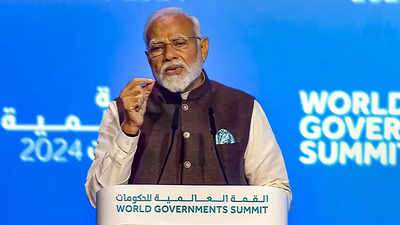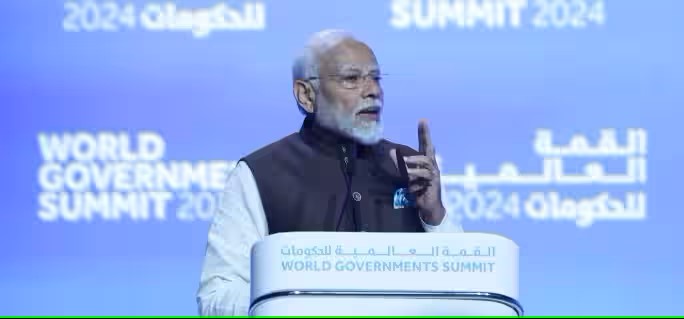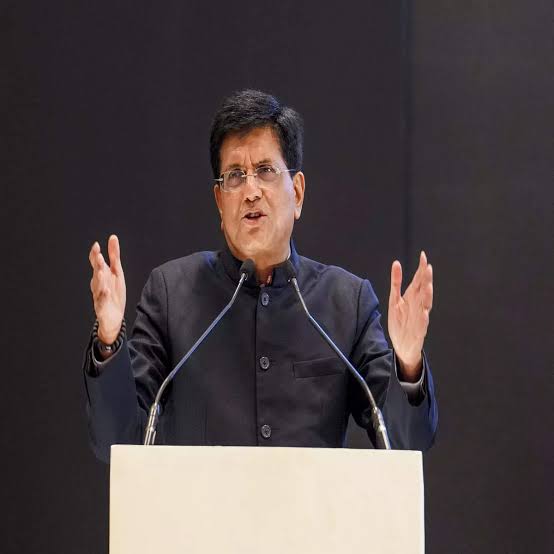The year was 2024, and the World Governments Summit in Dubai reverberated with the echoes of Prime Minister Narendra Modi’s visionary address. It wasn’t just a diplomatic formality; it was a masterclass in collaborative governance, resonating beyond the confines of the opulent venue and igniting a global dialogue on shaping a future woven from shared responsibility and human-centric leadership.
 Instead of merely reciting theoretical constructs, Modi unveiled India’s metamorphosis as a living testament to his message. His mantra of “Minimum Government, Maximum Governance” transcended mere rhetoric, translating into demonstrably effective initiatives like Aadhaar. This digital backbone empowered citizens, streamlined service delivery, and showcased the transformative power of technology in fostering inclusivity and sustainability. It wasn’t just a display of national pride; it was a potent invitation to global leaders to explore technology not as a cold innovation, but as a valuable tool for societal well-being.
Instead of merely reciting theoretical constructs, Modi unveiled India’s metamorphosis as a living testament to his message. His mantra of “Minimum Government, Maximum Governance” transcended mere rhetoric, translating into demonstrably effective initiatives like Aadhaar. This digital backbone empowered citizens, streamlined service delivery, and showcased the transformative power of technology in fostering inclusivity and sustainability. It wasn’t just a display of national pride; it was a potent invitation to global leaders to explore technology not as a cold innovation, but as a valuable tool for societal well-being.
Yet, Modi’s vision transcended India’s borders. He recognized the inherent interconnectedness of our world, urging a shift from siloed agendas to a spirit of collaborative problem-solving. This wasn’t a call for empty diplomatic gestures; it was a plea for genuine knowledge exchange and mutual learning. He pointed to India’s efforts during its G20 chairmanship, highlighting how shared challenges require shared solutions, and how fostering collective intelligence can pave the way for a more secure and prosperous future for all.
But Modi’s approach wasn’t confined to lofty ideals. He offered concrete pillars upon which effective future governance must rest. These weren’t mere buzzwords; they were actionable commitments:
- People-Centricity: From the Swachh Bharat Abhiyan (Clean India Mission) to the focus on last-mile delivery of welfare schemes, India showcased the power of prioritizing citizen well-being and inclusivity in building a thriving society.
- Tech-Enabled Efficiency: eNAM, India’s electronic National Agriculture Market, stood as a testament to how technology can bridge the gap between policy and the people it serves, empowering farmers and streamlining agricultural processes.
- Environmental Responsibility: Mission Innovation, a global initiative co-launched by India, exemplified its commitment to integrating environmental stewardship into the fabric of policy and action, paving the way for a climate-resilient future.
- Transparency and Accountability: India’s Open Data initiatives and citizen engagement platforms underscored its commitment to transparency, fostering trust and public participation in governance.
He went beyond, advocating for “Ease of Living, Ease of Justice, Ease of Mobility, Ease of Innovation, and Ease of Doing Business” as guiding principles in public service delivery. This wasn’t about bureaucratic jargon; it was about simplifying everyday interactions, empowering citizens, and dismantling cumbersome processes that stifle progress. This resonated with leaders seeking to bridge the gap between governance and its intended beneficiaries, ensuring policies translate into tangible improvements for their people.
But Modi’s leadership wasn’t confined to words. He highlighted India’s pivotal role as the G20 chair in 2023, where they tackled global challenges like climate change and digital transformation head-on, while also championing the concerns of the Global South. His call for reforming multilateral institutions to ensure wider representation wasn’t just about bureaucratic tweaks; it was a demand for inclusivity and reform, a reminder that true progress necessitates collective responsibility and shared ownership.
Finally, Modi’s message transcended the confines of the Summit. He reiterated India’s unwavering commitment to global progress as a “Vishwa Bandhu” (Friend of the World). But his most impactful message wasn’t reserved for leaders alone. He extended an invitation to individuals worldwide, urging them to embrace Mission LiFE (Lifestyle for Environment), promoting sustainable living and combating climate change. This call to action, ringing with urgency and hope, served as a fitting culmination to his address, reminding us that individual actions, collectively undertaken, have the power to shape a brighter future.
The ripples of Modi’s address extend far beyond the glitzy halls of the World Governments Summit. His vision serves as a beacon, illuminating the path towards a future where collaborative, human-centric, and sustainable governance empowers not just nations, but the global community as a whole. It is a future where individual actions merge with collective responsibility, weaving a tapestry of progress for generations to come.




